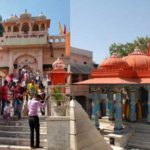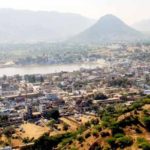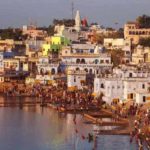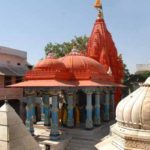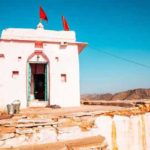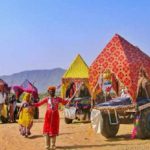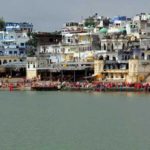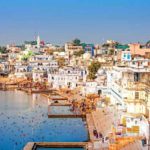Pushkar Tourism, a small temple town, is located around 15 km from Ajmer in Rajasthan. Every November, Pushkar is host to the Pushkar Mela, one of the biggest camel fairs in the country. Perfect choice for a weekend getaway from Jaipur, Pushkar is located amid Aravali ranges. Known for the world’s only dedicated Brahma temple, Pushkar is primarily a pilgrimage site for Hindus.
Spend some evenings sitting at the ghats while sipping chai or taking a stroll through narrow alleys while listening to the chants from temples surrounding the ghats. A delight for street-shopping lovers, Pushkar Tourism has shops in the main street selling everything from silver oxidised jewellery to merchandise swaddled in various colours.
The Pushkar Mela attracts millions of visitors from around the world. With folk performances, rides, stalls and even magic shows, the entire town is lit up, music blares from every house, and everyone is in a festive mood. Pushkar has slowly evolved from a religious destination to a multi-cultural hotspot with travellers from all over the world.
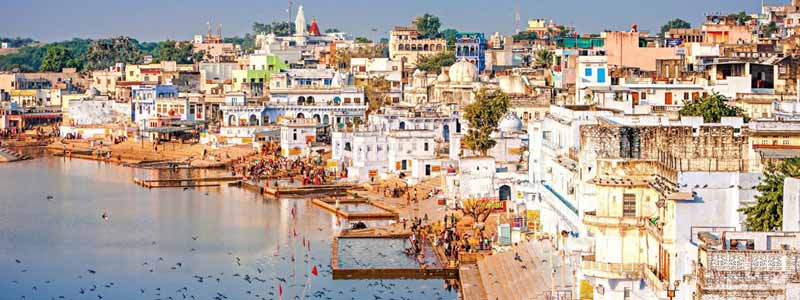
History:
Pushkar in Sanskrit means blue lotus flower. Pushkar Tour Packages has an impressive track record. Legend has it that Brahma found that Pushkar was ideal for his Mahayagna. He soon found out about Vajranash, a demon who was destroying the town’s people. Brahma killed the demon with a mantra singing on a lotus flower. On three locations in Pushkar Tourism, few parts of the lotus drop, and these places were later renamed Jyaistha, Madhya, and Kanishtha Pushkar. Brahma’s performed a yagna to shield Pushkar from demons.
Brahma’s consort, Savitri, was required for performing the yagna. She wasn’t there though, and Brahma married a girl from the Gurjar community named Gayatri to complete his yagna. Furious at the news of Brahma’s wedding, Savitri cursed that only in Pushkar should people worship Brahma. The temple of Pushkar Tourism still has a priest called Bhopas is known as Gurjar. In 1901 the city was under the Rajputana Agency and had 3,831 residents.
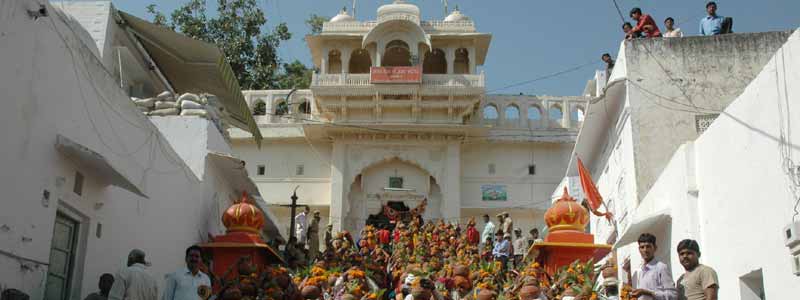
Attractions & Places to Visit and Explore in Pushkar
Best time to visit Pushkar is during the months of October – November. This is the time when the famous Pushkar mela aka Pushkar Camel Fair comes to town, and also the weather is nicer during these months. Here are some of the Top places to visit in Pushkar, Rajasthan that you must not miss:
Pushkar Lake : Pushkar lake is closest to the temple of God Brahma. As per mythology, this place is where Brahma and Savitri offered their prayers. It is believed that a dip in this holy river is the harbinger of Moksha — freedom from birth. The lake has several ghats, designed especially for taking baths and offering prayers. Brahma Ghat is the most famous among many others like Varaha, Dadhich, Saptarishi, Gwalior, Kota, Gau, Yag, Jaipur, Karni and Gangaur Ghat.
Man Mahal : Built by Amber’s Raja Man Singh, this beautiful palace is located close to the Pushkar sarovar. The palace is built in traditional Rajasthani architecture and has a temple inside. The palace is maintained by the Rajasthan Tourism Development Corporation and is used as a tourist bungalow. Pushkar Tourism The key attractions for tourists are breathtaking sunset views of the lakes and temples around. Camel riding and camping arrangements can be made on request for guests.
Brahma’s Temple : Situated near the Pushkar Lake, this is one of few temples of Brahma that now exist in India. Also known as the Jagatpita Brahma Mandir, the temple was built in the 14th century. The temple has been built with marble and stone and features a red pinnacle. The walls are decorated with bird motifs. Images of Brahma has been placed in the sanctum sanctorum Pushkar Tourism.
A unique tradition which is followed here is that this place is reserved only for ascetics or sanyasis and married men are not allowed to enter the sanctum sanctorum. The architectural beauty of this temple is simply amazing, especially the pillared outdoor hall and the numerous marble steps leading to the temple. The temple can be visited throughout the year but October and November are the most important months with a festival dedicated to Lord Brahma.
Naga Pahar : Pushkar and Ajmer are divided by a hill — known as Naga Pahar. As per the legends, the hills at Naga Pahar continue to diminish till date and will eventually disappear totally. These hills are believed to be the residence of the famous Sage Agastya. The hills also house a lake called Nag Kund. Naga Pahar offers a spectacular view of Pushkar city from its top and has often been used as a vantage point for photographers.
Varah Temple : Varah Temple is one of the largest temples in Pushkar Tourism. It is one of the oldest temples in the town too. The temple is dedicated to Varaha, an incarnation of Lord Vishnu as a boar. Constructed in the 12th century, this temple is an architectural wonder. Varah Temple was destructed the then Mughal ruler, Aurangzeb as he was offended by the depiction of the body of a man with the head of a boar in the temple. In 1727, the temple was restored by Raja Sawai Jai Singh II.
Savitri Mata Temple : Constructed in 1687, the Savitri Mata Temple is situated on the Ratnagiri Hill. It is believed to be the place where Goddess Savitri found some rest after revolting with her husband on marrying another woman. The temple is said to be built by her and it served as a lookout from where she could watch her husband’s moves. The temple homes the idols of Goddesses Savitri and Gayatri. The way to the temple passes through the hills so you can trek to the temple through the Ratnagiri Hill. This journey also has a religious significant as it is considered to be a penance of our sins.
Rangji Temple : Rangji Temple is one of the newest temples in the town and was constructed in 1823 under the guidance of Seth Puran Mal Ganeriwal. A major highlight of this temple is its South Indian architecture, especially the high gopuram. The temple is dedicated to Lord Rangii who is related to Lord Vishnu. The temple also features other architectural styles including the Rajput and Mughal. The temple is located near many tourist attractions of Pushkar Tourism, and you can explore them on a bicycle.
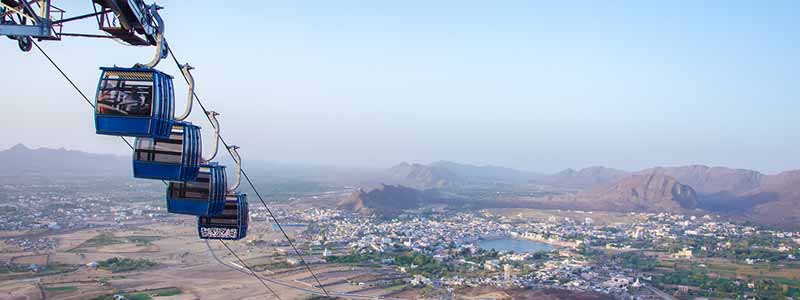
Best Time to Visit Pushkar
Pushkar Tourism is a lovely town cupped within hills on three sides and sandy dunes to trudge upon on the fourth side. The fascinating whitish blue temples lend an air of serenity in the glistening winter sun set against the rippling, silvery waters of the Pushkar Lake. The best time to visit Pushkar is winter season, when the temperature ranging between 8°C to 22°C makes it pleasant outdoors.
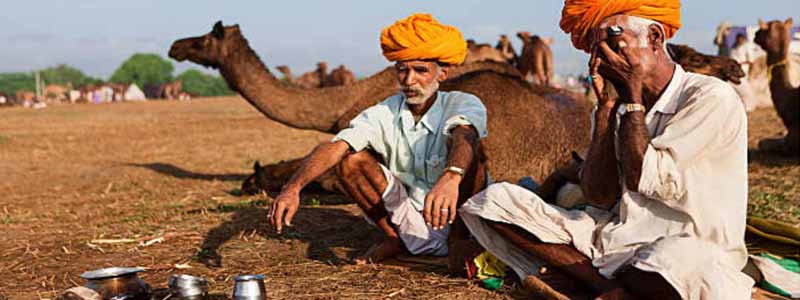
How to Reach Pushkar
Pushkar Tourism is a town in the Indian state of Rajasthan, which is known for its temples, ghats and influence of the 14th century civilization. It is one of the oldest inhabited cities of India and has been a great tourist destination from last many years. The major attractions that can be explored during a visit to this city include Pushkar Lake, Brahma Temple, Varaha Temple, Savitri Temple, Pushkar Camel Fair, etc.
By Air
Pushkar doesn’t have an airport but can be reached by air through the Sanganer airport. Flights from all major cities of the country can be taken to reach Pushkar through Sanganer. Taxis, transport buses and shared cabs are also easily available outside the Sanganer Airport.
By Road
Pushkar is well connected to several parts of the country by road. Buses, cars, cabs can be used to reach Pushkar from the National Highway that links the city to rest of the nation and vice versa.
By Rail
Ajmer junction is the closest railway station from where Pushkar can be reached easily. Located at a distance of 11kms, Ajmer station is connected to various parts of Rajasthan and India. Regular trains ply from the station and hence can be boarded accordingly.

